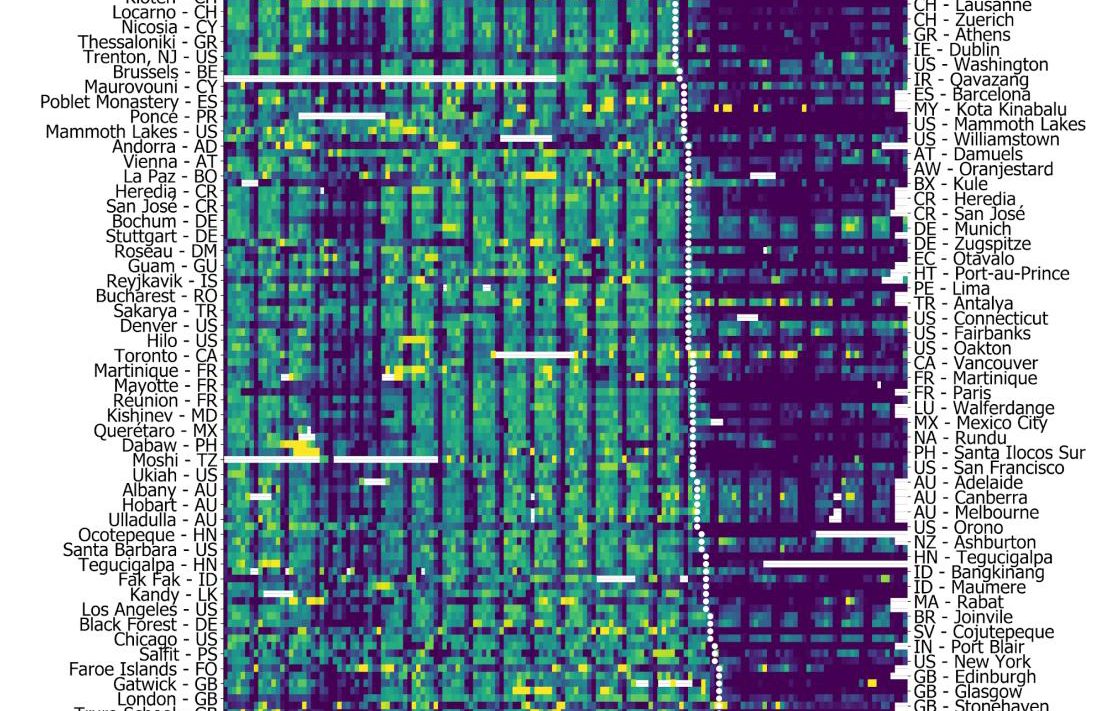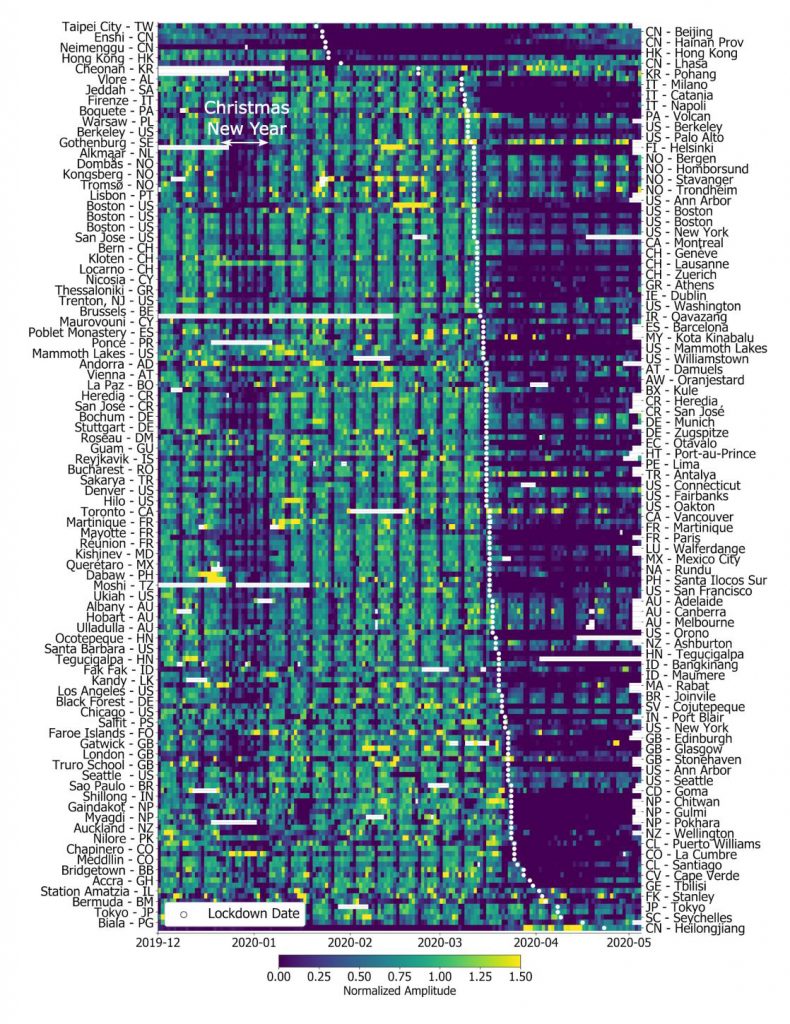For this study, the scientists collected, processed and analysed tens of terabytes of available data. The data comes from thousands of seismic monitoring stations around the world, from state-of-the-art seismic monitoring networks, but also from citizen seismic sensors that individuals and schools have installed on their premises, sharing data with the global community.
By analysing these data, the authors of the study observe that, while the frequency of earthquakes in 2020 remains identical to that of previous years, the drop in man-made noise is unprecedented. The greatest reductions in seismic noise were measured in urban areas, but the study also found signatures of confinement on sensors buried hundreds of metres underground and in less urbanised areas, such as sub-Saharan Africa.
This silent period could even make it possible to detect new types of signals, since seismic signals that are normally masked within the seismic noise, particularly during the day, are much clearer on seismic sensors in urban areas during confinement. The authors of the article hope that this initial work will lead to further studies on these signals, which can be detected during confinement, and the new data they could provide on earthquakes and volcanoes in particular.
The study also showed a strong correlation between the decreases in seismic noise caused by the reduction in human activity and human mobility data obtained from mapping applications on mobile phones and made available to the public by Google and Apple. This correlation should make it possible, in the future, to use seismic data as an indirect indicator of human activity in near-real time and, for example, to measure adherence to pandemic containment measures without having to resort to data posing potential confidentiality problems.
With increasing urbanisation and growing populations worldwide, more people will be living in geologically hazardous areas. As a result, it will become more important than ever to characterise the anthropogenic noise that humans cause so that seismologists can better listen to the Earth, particularly in cities, and monitor the movements of the ground beneath our feet.
The environmental effects of the containment measures linked to the pandemic are many and varied, with reductions in atmospheric emissions, traffic and noise pollution affecting wildlife in particular. This period of time has been named “anthropause”(https://www.nature.com/articles/s41559-020-1237-z) by the scientific community. This new publication is the first global study of the impact of the anthropause on the solid Earth.
Ref: Global quieting of high-frequency seismic noise due to COVID-19 pandemic lockdown measures. Thomas Lecocq, Stephen Hicks, Koen Van Noten, Kasper van Wijk, Paula Koelemeijer, et al, Science, 24 July 2020. DOI: 10.1126/science.abd2438










